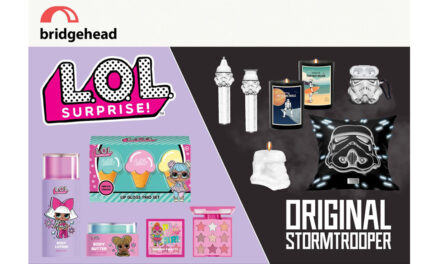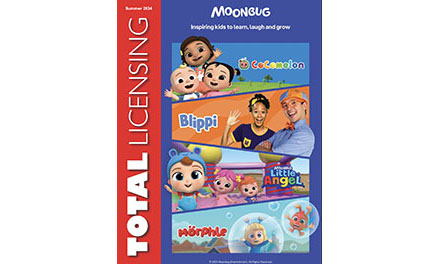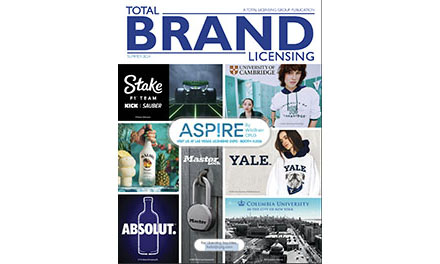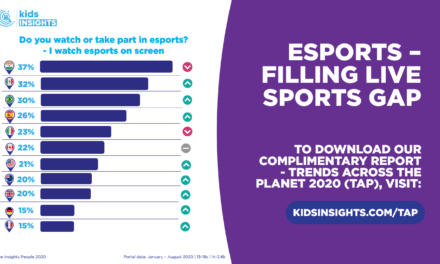
The Future of Tradition, Empowered with the Force of Licensing

How Museum Licensing may Empower Museums in China
By Angell Xi, Partner, Jingtian & Gongcheng, Shanghai Office
The 18th May has been International Museum Day in China since 1977, with one special theme created for each year. In 2019, the theme was ‘Museums as Cultural Hubs: The Future of Tradition’.
Nowadays, museums are no longer confined to their traditional primary missions – collection, conservation, communication, research and exhibition. Museums strive to constantly reinvent themselves, with no efforts spared to explore different ways to grow, to become important means of cultural exchanges, enrichment of cultures, development of mutual understanding and cooperation among peoples. For many people in China, museums play an interesting and important role in their lives.
Imagine that you are going to visit a new art exhibition in a museum and you start your journey on a metro. When you arrive at the metro station and step into a special-edition train heading directly to the museum, you find yourself already ‘in’ that exhibition… you are able to ‘see’, ‘hear’, ‘feel’ and ‘touch’ the exhibition – the artworks, the creative works and the merchandise. They are around you in the form of posters, photographs, videos and different kinds of displays. This is a typical immersive museum experience. When you get off the train and walk into the exhibition, for the first time, you are given an Oculus Rift at the entrance and you start your real art journey feeling great when you see the “real” artworks which were brought to Shanghai from Rome, Paris, London and New York. And what excites you more is that with the Oculus Rift, you find yourself suddenly walking in “The Mystery and Melancholy of a Street” of Giorgio de Chirico, while as you walk on, all of a sudden you ‘step into a garden with music, that is Vincent van Gogh’s ‘Almond Blossom.’ Then you want a coffee, so you go to the museum cafeteria, you find they are serving a limited edition of ‘Lily Pond Lunch Menu’ as inspired by Claude Monet’s Le Bassinaux Nympheas. At this time, your British Museum Xiaomi Mi Mix 2S Art Special Edition mobile phone rings, it is your best friend, she tells you that she just bought the Stoned Rose lipstick launched by the National Museum together with L’Oreal and a pair of Moschino V&A earrings and asks if you want to join her for low tea. So you visit the museum shop before departure, a Twinings and V&A William Morris special edition seems a perfect gift for the low tea, at the same time you add the exhibition edition of the notebooks, pens, tapes to your cart.
Such is a common scene for museum fans who live in Shanghai, Beijing, Guangzhou or other cities in China. For them, museums have been a part of their lives. They make their lives more artistic and delicate. Goods and services provided by museums or museum’s partners seem to be much more appealing than ordinary goods and services. And they are actually making a contribution to the museums, because a certain percentage of their payment will go to museums, as licensing royalties.
When museum licensing is being discussed, there will always be questions and challenges, mainly on the basis of Open Resources and Free Access as promoted by leading museums, including those who are successful in museum licensing, such as The Met, which launched its Open Access platform in 2017, seeking to make its collection one of the most accessible creating ‘Art is for Everyone’.
Actually there is no conflict between museum licensing and Open Access. If we look at The Met’s Open Access policy, one can easily find that it does not apply to all works, but the images that The Met believes to be in the public domain and those to which The Met waives copyright it might have, with usage made subject to the Creative Commons Zero (CC0) designation. In addition, the online collection of data is also made available in accordance with the CC0. However, for mages of artworks under copyright or other restrictions, a license shall apply.
Several questions are frequently asked when museum licensing is being discussed, such as, ‘Why should I pay royalties when numerous images of the same or similar are free to download?’, ‘Why should I be limited or restricted in using the images, trademarks or logos which I have paid for?’ ‘Why should I bear costs to fight piracy or other infringement and not the licensor?’
To answer these questions let’s analyse the process step by step.
First of all, let’s define what is museum licensing. Museum licensing is not akin to simply granting the copyright to use images. Take the two sunflowers of Vincent van Gogh as an example, which were both completed by the artist in 1888. The Sunflowers, 1888 is a collection currently owned by the National Gallery located in the UK and the other Sunflowers, 1888 was destroyed in Japan during World War II and no longer exists.
If discussion is only focused on the commercialisation value of the two works, the first is definitely is tremendously much more valuable than the second. The first is one of the most sought-after images for licensing in the Van Gogh Sunflowers series today. It has been extensively used, in various types and categories of licensing, ranging from traditional licensed products to modern visual media artworks. One of the major reasons that made it desirable in licensing is that the National Gallery trademark and logo are also granted for use under the license as well as the Sunflowers 1888 image. From a consumer perspective, museum licensed products and services normally represent high quality, the museum trademarks and logos definitely make the licensed products and services stand out and for these consumers, they are very much willing to pay a little bit more for the licensed products and services. As explained in the example above, museum licensing is more than copyright license of images, it is a complex package of licenses, including but not limited to the copyrights, registered trademarks, logos, and sometimes also include trade secrets and other intellectual property which relate to the licensing operation and management. In China, this was explained in the Operation Guidelines on Copyright, Trademarks and Brand Licensing of Museum Collections, the Museum Licensing Operation Guidelines published by the State Administration of Cultural Relics of China on 9 May 2019, which became effective on the same day. The Museum Licensing Operation Guidelines explicitly provide that the intellectual property to be licensed shall include the copyrights, registered trademarks and brands relating to the museum collections.
Secondly, museum licensing is way beyond high definition scanning or copy and paste. Instead, it requires high standard re-creation or development based on the museum collections. In recent years, museum licensing has boomed in China and is continuously growing. However, on the other hand, diversification and differentiation can hardly be found among museum licensed products. It is often impossible to identify a Palace Museum licensed notebook or tape from that from the Summer Palace, and there is also a piracy and counterfeit challenges in museum licensing.
Only if the licensee has an in-depth understanding and appreciation of the museum collections and is equipped and capable of museum research, competent in re-creating works and designing products/services based on museum collections, can it be successful in museum licensing and fully harness the innate potential of the artwork collections. To achieve this, the licensee has to work closely with the museum and experts to develop unique and different museum products, services or marketing events. From what we see from the Chinese market, it is very true that only museum products and services which are innovative with originality and are still identifiable by their Chinese cultural legacy can become popular. To achieve that, professional guidance and a close working relationship with museums is indispensible, which, of course, is not available for museum artworks being downloaded from the public domain or under the Open Access program. In addition, successful museum licensees are usually experienced in recreating and developing new intellectual property on the basis of the original museum collections, which then will obviously add value to the museum collections. In particular, the value of the intangible assets can be significantly increased and the popularity of the museums can be enhanced. This will, in the end, make a great contribution to the museum’s sustainability and development.
This is also clearly stipulated in the Museum Licensing Operation Guidelines as mentioned above, which provides that, ‘copyright acquired from the re-creation based on the museum collections shall belong to the museums.’ In practice, re-creation is deemed a good way to inherit and refresh the old and inhale the new re-creative process. Through quality museum licensing, licensees may help the museum to boost the value of museum licensing and enhance its competitive advantages among museums, and at the same time, help the museum to enrich its assets of intellectual property.
Thirdly, museum licensing is not a license without management. As seen in the market, a successful licensing program needs joint and collaborated efforts from all stakeholders, the same is true in museum licensing, which needs synergies optimized, common values shared and agreements executed according to agreement reached among the museum (as licensor), the licensee, agent and sub-licensees, effectively and collaboratively throughout the whole process of identifying rights for licensing, managing licensing and fighting against infringement. Only with that, can the licensing program be successful and beneficial for all parties. During this process, relationships among the parties are usually constrained by one or more licensing agreements. Besides, as mentioned in the Museum Licensing Operation Guidelines, museums can carry out licensing activities directly, or through selected third-parties. Depending on the licensing module, they can adopt sole, exclusive, or ordinary licensing. With such arrangements, together with the style guide, a written approval policy and the auditing process, as well as advertising and media guidelines, the museum shall have an effective mechanism to manage and oversee the licensing program. Of course, museums may find it helpful to engage third party experts and professionals so as to ensure protection of all parties’ benefits from a museum licensing program which is legitimate, compliant, effective and sustainable.
Further, museum licensing is a business model of massive benefit, which empowers museums to be sustainable with income and without investment or additional efforts. Of all benefits, a museum may achieve from licensing include a royalty income, free promotion, better branding and more popularity outside its own country or region. In China, this has been proved true through various examples.
Take the Palace Museum as an example, it is widely known that in 2017, the total turnover of its cultural and creative products was pushing RMB 1.5 billion yuan (equivalent to US$0.21 billion). For the same year, according to official sources, the total turnover of cultural and creative products from museums throughout China reached approximately RMB 3.52 billion yuan (equivalent to approximately US$0.496 billion). And, taking the British Museum as a good example of foreign museums, the unofficial statistics state that in 2018 its turnover from China reached over RMB 0.2 billion yuan (equivalent to approximately US$28.2 million). Also in 2018, a good example came from a pop-up store of China Taiwan’s Palace Museum in Taipei. Within three months of opening, this single pop-up store generated sales revenue up to TWD 0.5 billion yuan (equivalent to approximately US$15.5 million). In addition, it is worthwhile noting that because museum licensing is licensing of rights only, instead of any collection, there is no risk to the ownership or safety of the museum collections nor does it create additional burden or encumbrance to the museum, or negative impact.
As we mentioned above, in addition to licensing fees, the benefits museums achieved from licensing are more than just revenue. For many museums, especially foreign museums, this may enable them to become more known in foreign countries like China, and in return this may bring them more visitors and consumers from China. Resources from the British Museum and The Met prove it to be true. Museum licensing also enables museums to create opportunities to work with various partners in the field of public education, training and development, to serve the museums’ primary mission of public interest and non-profit. Moreover, museum licensing activities also provide invaluable training and exposure to museums staff, as talent development opportunities for different levels of staff.
This can create invaluable experience for their career and can be the spark to reignite their passion in a career with the museum services. Possibly, this may also solve the lack of talent problem that plagues numerous museums in China today. Of course, notwithstanding the above, museum licensing is not perfect nor risk-free, for either a museum or licensee. A comprehensive risk assessment should be undertaken in advance, to cover the whole process of identifying rights for licensing, licensing, managing licensing and fighting against infringement. In addition, effective protection measures should be put in place at all levels to avoid legal liabilities. Regulatory compliance risks should also be closely and effectively managed to avoid infringement of any existing copyright, trademark or other intellectual property right, and to mitigate and eliminate industry-related regulatory compliance risk such as those that apply to industries like foods and beverages, automobiles and parts, medical etc.
As a conclusion, if well-managed and well-coordinated, museum licensing can become a key tool to unlock the vast potential of artworks residing in museums and could be the driving force to generate and motivate multi-tiered co-operation and dialogue among museums, licensees, other stakeholders and the general public. This will spur museums toward greater heights, and this may empower museums to develop with sustainability.
The central focus of International Museum Day in recent years has been sustainable development.
With that taken into consideration, it is believed that museum licensing can be a force to empower museums and a common thread through the themes of recent years, starting in 2004 with Museums and Intangible Heritage to 2015 when the theme was Museums for a Sustainable Development of Society and 2018 when the theme was Hyperconnected Museums: New Approaches and New Public. Right up to date, the 2019 theme was Museums as Cultural Hubs: The Future of tradition.
It is expected that, via museum licensing, museums can become more interactive, flexible, adaptable and mobile, so as to be more relevant to the general public and become more meaningful to their daily lives, allowing the tradition not only be felt and experienced in the present, but to be reinvented and re-created for the future. It is very much hoped that museum licensing may benefit all, with heritage as a cornerstone, to build a better future for generations to come, not only in China, but also throughout the world.
















